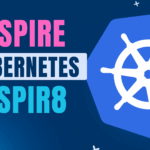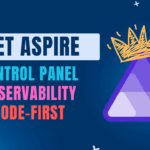- Home
- Articles
- Distributed Systems
- .NET Aspire: Control Panel, Observability & IaaC
.NET Aspire: Control Panel, Observability & IaaC
.NET Aspire: Control Panel, Observability & IaaC
Master .NET Aspire’s three most powerful features for cloud-native development
The Cloud-Native Development Challenges
Building distributed systems traditionally involves complex orchestration and scattered monitoring tools. Here are the three biggest pain points developers face:



The Solution: Enter .NET Aspire
.NET Aspire revolutionizes cloud-native development with deployment-first approach that combines development and orchestration:
Built-in Control Panel – Start, stop, and manage all resources from one dashboard
Unified Observability – Logs, traces, and metrics in a single interface
Code-First Infrastructure – Strongly-typed resource configuration with IntelliSense
Dependency Management – Automatic service startup ordering and health checks
Visual Service Graph – See all dependencies and connections at a glance
Three Core Features in Action
Experience .NET Aspire’s power through these three essential capabilities:
 Complete Aspire Setup
Complete Aspire Setup# 1. Create new Aspire project
dotnet new aspire
# 2. Add service with dependencies
builder.AddProject<Projects.WebApp>("webapp")
.WithReference(postgres)
.WithReference(redis);
# 3. Run with full observability
dotnet runThat’s it! With these steps you get:
- Automatic resource orchestration
- Real-time observability dashboard
- Service dependency management
- Built-in health monitoring
Feature Deep Dive
1. Control Panel: Resource Orchestration
The Aspire dashboard provides complete control over your distributed system. You can start, stop, and monitor individual services while seeing their real-time status and health.
Key capabilities:
- Start/stop individual services
- View service URLs and endpoints
- Monitor resource health status
- See service dependencies visually
// Define services in AppHost
var builder = DistributedApplication.CreateBuilder(args);
var postgres = builder.AddPostgres("postgres")
.WithPgAdmin()
.AddDatabase("catalogdb");
var redis = builder.AddRedis("redis")
.WithRedisCommander();
builder.AddProject<Projects.CatalogApi>("catalog-api")
.WithReference(postgres)
.WithReference(redis);2. Observability: Logs, Traces, and Metrics
Get complete visibility into your distributed system without additional setup:
// Automatic OTLP integration
builder.Services.AddOpenTelemetry()
.WithMetrics(metrics => metrics
.AddAspNetCoreInstrumentation()
.AddHttpClientInstrumentation())
.WithTracing(tracing => tracing
.AddAspNetCoreInstrumentation()
.AddHttpClientInstrumentation());What you get automatically:
- Structured Logs – Centralized logging from all services
- Distributed Tracing – Follow requests across service boundaries
- Performance Metrics – Request duration, error rates, throughput
- Trace Correlation – See complete request flow with spans
3. Code-First Infrastructure
Define your entire infrastructure using strongly-typed C# code with full IntelliSense support:
// Add Kafka with NuGet integration
// First: dotnet add package Aspire.Hosting.Kafka
var kafka = builder.AddKafka("kafka")
.WithLifetime(ContainerLifetime.Persistent);
// Use WaitFor to control startup order
builder.AddProject<Projects.OrderProcessor>("order-processor")
.WithReference(kafka)
.WaitFor(kafka); // Ensures Kafka starts firstSee It in Action
Once your Aspire application is running, explore these powerful features:
Dashboard Navigation
Access your control panel at the provided URL after running:
dotnet run --project AppHostDashboard sections to explore:
- Resources – All services, databases, and message queues
- Graph View – Visual dependency relationships
- Console Logs – Real-time log streaming
- Traces – Distributed request traces with spans
- Metrics – Performance KPIs and custom metrics
Advanced Service Dependencies
Demonstrate complex scenarios with dependency injection:
// Complex dependency setup
var builder = DistributedApplication.CreateBuilder(args);
var postgres = builder.AddPostgres("postgres");
var redis = builder.AddRedis("cache");
var rabbitmq = builder.AddRabbitMQ("eventbus");
// API with multiple dependencies
builder.AddProject<Projects.BasketApi>("basket-api")
.WithReference(postgres)
.WithReference(redis)
.WithReference(rabbitmq)
.WithEnvironment("ASPNETCORE_ENVIRONMENT", "Development");What You’ve Achieved




Resources & Code
All code examples and the complete eShop implementation are available in my GitHub repositories:
Next Steps
Now that you understand .NET Aspire’s core features, the next challenges are:
- Kubernetes Deployment – Scale beyond local development with production orchestration
- Performance Testing – Stress test your distributed system under load
- Production Monitoring – Implement comprehensive observability in live environments
Watch the Full Tutorial
Questions about .NET Aspire? Drop a comment below – I respond to every question!


 Watch .NET Aspire Deep Dive
Watch .NET Aspire Deep Dive



